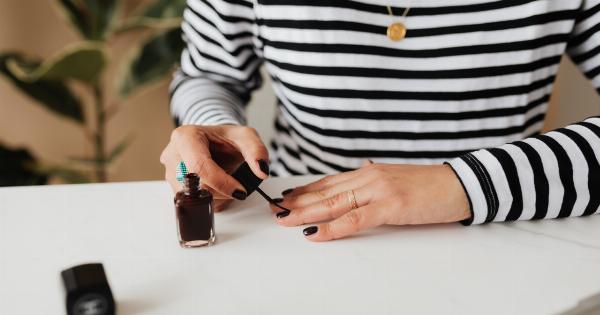Do the ingredients in nail polish pose any danger?.
Hazardous Chemicals in Nail Polish
Nail polish is a popular cosmetic product used by millions of people worldwide to enhance the appearance of their nails. However, many people are unaware of the potential dangers associated with the ingredients commonly found in nail polish.
While some ingredients are harmless, others can pose serious risks to human health and the environment.
Toluene: A Known Neurotoxin
Toluene is a commonly used solvent in nail polish that helps create a smooth and even application. However, toluene is a known neurotoxin that can cause damage to the central nervous system.
Prolonged exposure to this chemical has been linked to headaches, dizziness, and even reproductive problems. Pregnant women are particularly at risk, as toluene has been associated with developmental delays in children.
Dibutyl Phthalate: A Potential Endocrine Disruptor
Dibutyl phthalate, often referred to as DBP, is commonly used to make nail polish more flexible and resistant to chipping. However, studies have shown that DBP can act as an endocrine disruptor, interfering with the body’s hormonal balance.
This chemical has been linked to reproductive and developmental problems, particularly in males. It’s important to note that in many countries, including the United States, DBP has been banned for use in cosmetics.
Formaldehyde: A Known Carcinogen
Formaldehyde is a highly controversial ingredient found in some nail polishes. This chemical is used as a preservative and hardening agent.
However, formaldehyde is classified as a known human carcinogen by the International Agency for Research on Cancer (IARC). Prolonged exposure to formaldehyde has been linked to an increased risk of cancer, including nasopharyngeal cancer and leukemia.
Camphor: A Respiratory Irritant
Camphor is a common ingredient used to give nail polish a glossy finish. However, camphor can also be a respiratory irritant, especially when inhaled in large amounts. Symptoms of camphor inhalation can include dizziness, nausea, and headaches.
In severe cases, camphor poisoning can occur, leading to seizures and liver damage.
Formulation Changes and Safer Alternatives
Due to growing concerns about the safety of nail polish, many companies have started to reformulate their products to eliminate or reduce the use of harmful chemicals.
Look for nail polishes labeled as “3-free” or “5-free,” which means they are free from certain harmful ingredients like toluene, DBP, formaldehyde, formaldehyde resin, and camphor. Some companies even offer “10-free” or “12-free” alternatives, which exclude additional potentially toxic chemicals.
Safer Nail Polish Brands
Several nail polish brands have emerged that prioritize the use of safer ingredients without sacrificing performance. These brands often use non-toxic and cruelty-free formulas that are gentler on the nails and the environment.
Some popular examples include Zoya, Piggy Paint, and Ella+Mila. These brands offer a wide range of colors and finishes, providing a safer and more ethical alternative for nail polish enthusiasts.
Precautions and Safety Measures
While choosing safer nail polishes is a step in the right direction, it’s also important to take additional precautions to minimize the potential risks associated with nail polish use. Here are some safety measures to consider:.
- Avoid using nail polish in poorly ventilated areas.
- Apply nail polish in a well-ventilated room or use a portable manicure table with a built-in ventilation system.
- Limit the frequency of nail polish application to reduce overall exposure.
- Consider using a protective base coat before applying nail polish to create a barrier between the nails and the potentially hazardous ingredients.
Conclusion
The ingredients commonly found in nail polish can indeed pose dangers to human health and the environment.
Chemicals like toluene, dibutyl phthalate, formaldehyde, and camphor have been linked to various health concerns, ranging from neurological damage to cancer. However, by choosing nail polishes labeled as “3-free,” “5-free,” or even “10-free,” consumers can reduce their exposure to these harmful ingredients.
Furthermore, practicing safety measures such as applying nail polish in a well-ventilated area and limiting overall usage can help minimize the potential risks associated with nail polish use. Ultimately, prioritizing safer alternatives and taking precautions can lead to healthier and more conscious nail care practices.































